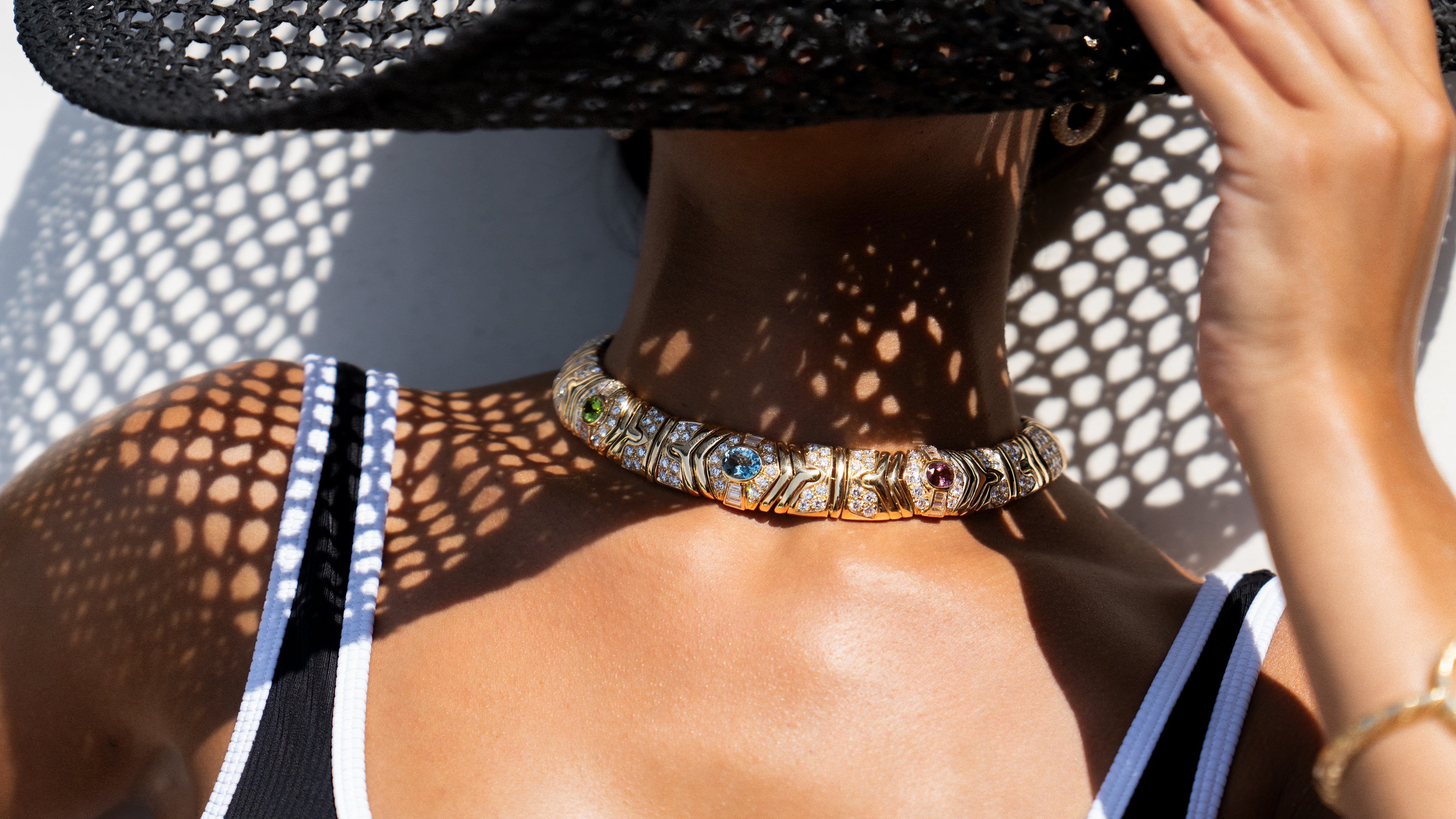Margot de Taxco
As the Stars are to the Night, so are the Jewels to the Woman. – Business Card of Margot de Taxco
Margot Van Voorhies was born in 1896 in San Francisco, California. By the time she left her native country for good, she had survived the death of her father in 1903, the San Francisco Earthquake in 1906, the loss of her mother at the hands of a brutal murderer in 1931 and the end of her first marriage in 1936.
Fortunately, a Mexican vacation changed the life of Margot Van Voorhies in ways she could never have imagined. In 1937, forty-one-year-old divorcée Margot Van Voorhies left San Francisco on a trip to Mexico City. Fate threw her into the path of Don Antonio Castillo, who took her to Taxco, a Mexican hotbed for the design, crafting, and production of silver objects, in particular jewelry and housewares.
Soon, Castillo would become Margot’s second husband. At the time, Castillo was working for William Spratling, a pioneer in Mexican silversmithing. He brought Margot into the business as a designer, helping her to transform her paper creations into three-dimensional forms in silver. In 1939, the pair, along with other members of Castillo’s family, opened shop as Los Castillo Taller [Taller is Spanish for “Workshop”], with Margot as the top designer.
After ten years, the marriage between Castillo and Van Voorhies dissolved, as did their professional association. Margot went on to open her own shop in 1948, taking the name Margot de Taxco, by which she is best known today. Seven years later, enamel was added to many of her pieces, and this is where Margot found her legacy.
At the peak of her career, Margot, who designed each piece herself, had two dozen silversmiths and a dozen enamellists in her employ to execute her vision. The men performed the duties as silversmiths; the women did the enamel work, using tiny brushes to bring the watercolor drawings to life. To ensure the accurate rendering of her jewelry designs, she compiled a book of instructions and drawings, detailing the construction and finishing of each. Margot attracted talented craftsmen who later went on to cement their own reputations, such as Sigi Pineda, Miguel Melendez, and Melecio Rodriguez.
Many contemporary Hollywood celebrities were clients of Margot, including John Wayne and Lana Turner, who visited her shop every year.
Tragedy struck in the form of a fire in 1960. Forced to move her studio, she never again regained her prior success, and the business folded in 1974. Margot granted several of the silversmiths in her employ permission to use her molds to create pieces on their own, in return for debt forgiveness. As a result, many of Margot’s pieces were re-created by silversmiths such as Jaimie Quiroz and Geronimo Fuentes, bearing their hallmark rather than hers.
Margot passed away in 1985. But her talent as a designer and her influence as an artist have continued to gain recognition since the time of her death.
Margot’s shop produced some repousse silver (a technique where a raised or relief design is hammered in from the reverse side of the piece). But she is best known for her champlevé enamel work. Champlevé is created by carving, etching, striking, or casting troughs or cells into the surface of a piece and filling it with vitreous enamel. In Margot’s jewelry, the designs were die-struck, a process that was detailed and critical to the final product.
Margot produced many suites that included necklaces, brooches, bracelets, and earrings, as well as convertible jewelry. Margot de Taxco jewelry is recognized for its elegance, femininity, and variety.
There were many areas of influence that can be found in Margot’s work. Her fish and wave motifs celebrated her love of Japanese art. The ornate swirls and floral motifs were reminiscent of the Art Nouveau style. Mischievous pre-Columbian figures were a recurring theme. Art Deco style ballerinas struck graceful poses. Margot was also taken with Egyptian motifs and Mexican crafts.
Margot de Taxco pieces are distinguished by the stamp that includes her name, Eagle 16 (or Eagle 1, for her earlier works), along with a production number. Issued by the government, the eagle stamp was a way to identify the manufacturer.
Notable Pieces
A series of zodiac charms, designed with grace and elegance, are highly collectible to this day.
Silver snakes with highly detailed enameled features were fashioned into necklaces, bracelets, earrings, and rings.
A Greek Key ensemble in silver with a striking design of teal and black enamel included a necklace, bracelet, and earrings.
